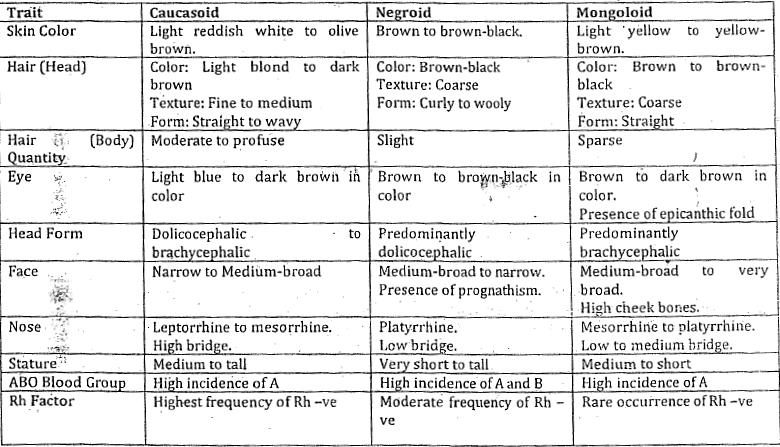Racial Classification & Differentiation | Anthropology Optional for UPSC PDF Download
Introduction
One of the most striking features of human species is its awesome variety. In the preceding chapter we have discussed the factors that are responsible for the formation of races. We have noted that races are manifestation of the on-going evolutionary processes and apart from genetic factors, environment, nutrition and culture also play an important role in their formation. We have also seen the various criteria employed by raciologists in the classification o human populations. We shall now focus our attention to the different types of racial / ethnic groups in the world, their characteristics and distribution.
History
The-first scientific attempt towards classification of the human populations can be credited to the Swedish naturalist Carolus Linnaeus. He has classified our species Homo sapiens into four groups:
- Homo americanus
- Homo europeans
- Homo asiaticus
- Homo afer (Africans)
In 1775, John Frederick Blumenbach, a German biologist has classified the human populations into five groups or races on the basis of skin color. They are:
- Caucasian or White: Europeans (except Lapps and Finns). Also found in North Africa, West Asia,
- Mongolian or Yellow: Includes the Lapplanders and Finns, Eskimos of Americas, Asia
- Ethiopian or Black: Includes all of Africa except North Africa where Caucasians are present.
- American or Red: Non Mongolian populations of America
- Malayan or Brown: All the inhabitants of Pacific.
A number of different classifications have been proposed by different scientists including Pickering in 1848, Topinard in 1885, Quatrafages in 1889 and Deniker in 1889 and many others, For example, Montandon, in 1933 has identified five races of mankind - Pygmoid, Veddoid, Negroid, Australoid and Europoid. In 1925, Ottenberg attempted to classify the races on the basis of ABO blood group system and has identified six races:
- European: Norwegians, Italians, Germans, English, French, Swedes, Greeks, Anglo-Saxon Americans.
- Intermediate: Russians, Turks, Arabs, Armenians, Polish jews.
- Hunan: Japanese, Southern Chinese, Romanian Jews, Hungarians.
- Hindu-Manchu: Koreans, Manchu, Northern Chinese, Gypsies, Hindus.
- Afro-Malaysian: Negroes, Malayans, African Americans.
- Pacific-Americans: Amerindians, Icelanders, Australian Aborigines.
In 1946 Weiner proposed another classification system based on the frequencies of alleles for ABO system, MNS system, Rh blood factor. He classification identifies six groups of peoples on this basis into Caucasoid, Negroid, Mongoloid, Asiatic, Australian and Amerindian.
In 1931 and subsequently in 1947 Hooton, an American anthropologist have proposed the now widely accepted classification of races into three major groups - Caucasoid, Negroid and Mongoloid - with each one of them further di vided into different subtypes.
It is surprising to know that till date more than twenty to thirty different classifications have been given by different scientists at different times. This highlights the lack of agreement amongst them as to what constitutes a race and how many races can be identified in the world. Disagreements exist as different anthropologists use different criteria for classification of races. We shall now look at the most popular classification of the human races into three races, Caucasoid, Mongoloid and Negroid, with many subtypes. The following table gives a general idea about their racial features.
|
108 videos|243 docs
|


















